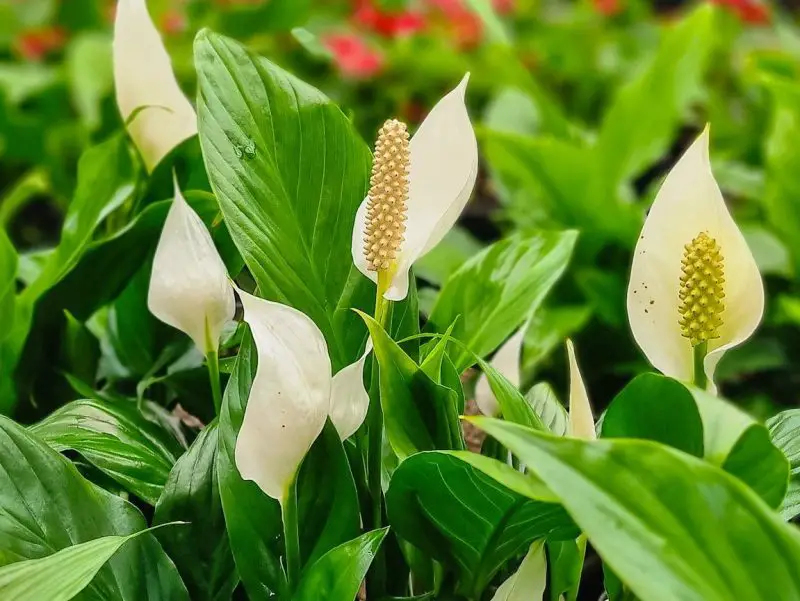Peace lilies stand out as popular indoor plants due to their stunning white blossoms, lush green foliage, and capacity to improve indoor air quality. They are often chosen for homes and offices because they thrive in low-light conditions and require minimal care compared to other flowering plants. However, even the hardiest peace lilies can sometimes appear droopy, yellowed, or stop blooming altogether. This can leave plant owners feeling frustrated and wondering whether their peace lily is dying.
Fortunately, peace lilies are resilient plants that can bounce back when given the proper care. Learning how to revive a peace lily involves understanding its needs, recognizing signs of stress, and making gradual adjustments to restore its health. With patience and consistent care, you can bring your peace lily back to life and encourage it to bloom beautifully again.
This comprehensive guide will walk you through every step of peace lily revival, from diagnosing problems to providing optimal growing conditions for long-lasting health and blooms.
Understanding Why Peace Lilies Decline

Common Causes of Stress in Peace Lilies
Peace lilies are tropical plants native to humid forest floors, where they receive filtered sunlight and thrive in consistently moist but well-draining soil. When grown indoors, environmental changes can cause stress. The most common issue is improper watering. Overwatering often leads to root rot, which causes yellowing leaves and droopy stems, while underwatering results in wilting and browning leaf edges.
Light exposure is another key factor. Although peace lilies tolerate low light, insufficient light can prevent them from blooming, while direct sunlight can scorch the leaves. Temperature fluctuations and low humidity levels also stress the plant, causing leaf tips to turn brown or curl.
Nutrient deficiencies can further weaken the plant, making it less likely to bloom. Since peace lilies are slow growers, they gradually deplete the nutrients in their soil if not fertilized occasionally. Recognizing these causes is the first step toward successful revival.
Identifying Stress Versus Natural Growth Changes
Peace lilies sometimes shed older leaves or pause flowering naturally. This does not always indicate a serious problem. If new leaves are still emerging and look healthy, the plant is simply going through a normal growth cycle.
However, if most of the leaves are turning yellow or brown, if the stems droop despite watering, or if the plant has not bloomed for several months despite receiving proper care, it may be stressed and need immediate attention. Checking the soil, roots, and environmental conditions will help determine the cause.
Assessing the Peace Lily’s Condition
Examining the Roots and Soil
The root system is the best indicator of a peace lily’s health. Gently remove the plant from its pot to inspect the roots if you suspect serious problems. Healthy roots are firm and creamy white, while rotting roots are dark brown, mushy, and have a foul smell. If you find root rot, the plant must be trimmed and repotted in fresh soil.
The soil itself should feel slightly moist but not soggy. If it feels compacted or holds too much water, it may be suffocating the roots. Old soil also loses nutrients over time, making it harder for the plant to thrive.
Observing Leaves and Stems
Leaves provide clear clues about the plant’s condition. Drooping leaves may simply indicate thirst, but if they remain limp after watering, root problems could be the cause. Yellowing leaves often suggest overwatering or nutrient deficiencies, while brown leaf tips may indicate low humidity or a build-up of minerals from tap water.
The stems should feel firm and upright. Soft, collapsing stems are a sign of severe stress and may require immediate repotting and root care.
Adjusting Watering Practices for Recovery
Correcting Overwatering Problems
One of the most common mistakes peace lily owners make is overwatering. If the soil is constantly soggy and the roots are rotting, the plant cannot absorb oxygen properly. To revive an overwatered peace lily, allow the soil to dry out slightly before watering again. Trim away any rotting roots and repot the plant in a well-draining mix to prevent further damage.
Going forward, water only when the top inch of soil feels dry. Peace lilies prefer evenly moist soil, but they should never sit in standing water. Using pots with drainage holes ensures excess water can escape.
Treating Underwatered Peace Lilies
If your peace lily is severely dehydrated, its leaves will droop dramatically. The quickest way to rehydrate it is by giving it a deep soak. Place the pot in a basin of water for about fifteen minutes, allowing the soil to absorb moisture from the bottom. Once the soil is thoroughly moistened, let the pot drain completely. Within hours, you should see the leaves perking up.
For long-term care, establish a consistent watering routine, adjusting frequency based on the plant’s environment. In warmer months, peace lilies may need watering every five to seven days, while in cooler months, every ten to fourteen days may be sufficient.
Providing Ideal Light Conditions
Peace lilies thrive in bright, indirect light. While they can survive in low-light conditions, they may stop producing blooms if they do not receive enough light. To encourage flowering, place your peace lily near a north or east-facing window, where it gets gentle morning light.
Avoid placing it in direct sunlight, as this can scorch the leaves and cause them to turn yellow or develop dry brown patches. If natural light is limited, you can use fluorescent or LED grow lights to supplement lighting, keeping them on for about twelve hours a day.
Repotting to Restore Root Health
Repotting is often necessary to revive a stressed peace lily, especially if the soil has become compacted or the plant has outgrown its pot. Choose a slightly larger pot with proper drainage holes, and use a fresh, well-draining potting mix rich in organic matter. A mixture of peat moss, perlite, and standard houseplant soil works well.
When repotting, gently remove the plant from its old pot and shake off as much of the old soil as possible. Trim away any dead or damaged roots with sterilized scissors before placing the plant in the new pot. After repotting, water lightly and allow the plant to adjust for a few days before resuming normal care.
Boosting Humidity and Maintaining Proper Temperature
Peace lilies are native to tropical environments, so they thrive in warm, humid conditions. Indoor air, especially during winter, can be too dry for these plants. To increase humidity, place a humidifier nearby, mist the leaves lightly every few days, or set the pot on a tray filled with water and pebbles, ensuring the bottom of the pot is not submerged.
The ideal temperature range for peace lilies is between 65°F and 80°F. Avoid placing them near heating vents, air conditioners, or drafty windows, as sudden temperature changes can stress the plant. Maintaining stable warmth and humidity will help the plant recover more quickly and encourage healthy new growth.
Feeding Peace Lilies for Recovery and Blooming
Peace lilies are not heavy feeders, but they do benefit from occasional fertilizing, especially when recovering from stress. Use a balanced, water-soluble houseplant fertilizer diluted to half strength. Fertilize every six to eight weeks during the growing season, but avoid overfertilizing, as excessive salts can burn the roots.
If you want to encourage blooming, choose a fertilizer slightly higher in phosphorus, which promotes flower development. Reduce feeding during the winter months when the plant naturally grows more slowly.
Encouraging Peace Lilies to Bloom Again
Peace lilies may stop blooming if they are not receiving enough light or if their growing conditions are inconsistent. Once the plant has recovered its health, provide optimal light, proper watering, and regular feeding to encourage flowering.
Temperature also plays a role in triggering blooms. A slight difference between daytime and nighttime temperatures can stimulate the plant to produce new flower stalks. Keep the plant in a stable environment and be patient—peace lilies often take several weeks to rebloom after recovering from stress.
When flowers begin to appear, avoid moving the plant frequently, as changes in light and temperature can cause buds to drop prematurely. With consistent care, the elegant white blooms can last for several weeks, adding beauty and grace to your space.
Maintaining Long-Term Health
Reviving a peace lily is just the beginning of keeping it healthy for years to come. Regularly wipe the leaves with a damp cloth to remove dust, which can block photosynthesis. Monitor the plant for signs of pests such as spider mites or aphids, though peace lilies are generally pest-resistant.
Repot every one to two years to refresh the soil and provide space for root growth. Consistent watering, proper lighting, and occasional feeding will ensure your peace lily stays lush and continues to bloom season after season.
FAQs About Reviving Peace Lilies
How long does it take to revive a peace lily?
The recovery time depends on the severity of the stress. A mildly wilted peace lily may perk up within a day after proper watering, while one with root rot may take several weeks to fully recover.
Can a dying peace lily be saved?
If some healthy roots remain and the crown is firm, most peace lilies can be revived with proper care. However, if the roots are completely rotted and the crown has turned mushy, revival may not be possible.
Why is my peace lily not blooming?
Lack of light is the most common reason peace lilies stop blooming. Provide bright, indirect light and use a phosphorus-rich fertilizer during the growing season to encourage flowering.
Should I cut off yellow or brown leaves?
Yes, removing damaged leaves helps the plant focus its energy on new growth. Use clean scissors and cut the leaves at the base of the stem.






